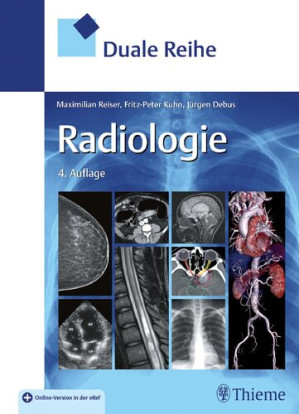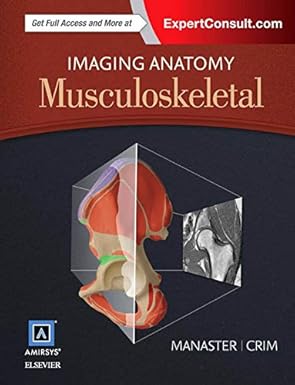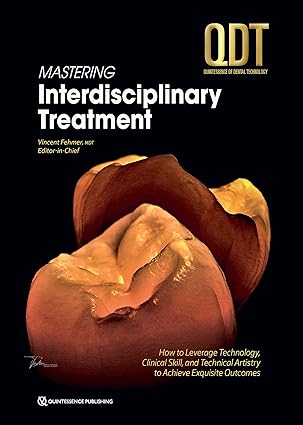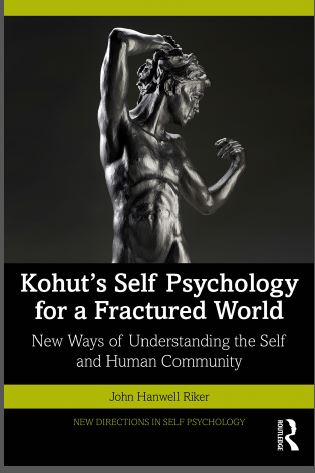The three treatises translated herein from the original Sanskrit represent the earliest phase of Vajrayana expository literature. A principle expounded in common by all is the utilization of the special skillful means (upaya-kaushalya) of Vajrayana to transmute afflictive emotions (klesha), especially desire (kama), into Great Bliss (mahasukha) and enlightenment (bodhi). This principle has been called Kama-Siddhi, the "Perfection of Desire" in the Cakrasamvaratantra and cited in Anangayogi's Dakinijalasamvararahasya, the first treatise translated in this volume.
The dates of composition range from the 2nd-to 8th centuries CE. Their authors, Anangayogi (Anangavajra?), Aryadeva and Shantarakshita were scholar-adepts of the latest phase of Buddhism in India which recognized the Three Vehicle (Tri-yana) schema of Sravakayana (Disciple Vehicle), Paramitayana-Mahayana (Perfection Great Vehicle) and Mantra-Mahayana/Vajrayana (Mantra Great Vehicle/Adamantine Vehicle).
If the author of our first treatise "Mystery of the Concealed Essence of the Network of Dakinis (Dakinijalasamvararahasyam) is identical with Anangavajra, author of the Accomplishment of Determination Wisdom and Means (Prajnopapayaviniscayasiddhi), the treatise must have been composed in the early 8th cent. CE as he is recognized as the being the second in the lineage of the 84 Great Adepts (mahasiddhas) of Vajrayana who flourished from the 8th-12th centuries.
Unlike the two other treatises translated herein, the "Dakinijalasamvararahasyam" does not offer logical-epistemological defenses of the Tantric principles but resorts to the analogical type "proofs" found in the Root Tantras (mulatantras) such as the Hevajra and Cakrasamvara. It excels, however, in decoding terms of the Tantric code language (sandhyabhasa), a feature that should be of great interest to students of the Vajrayana. Its most important feature, moreover, is the significance of its title Dakinijalasamvararahasyam, rendered "Mystery of the Concealed Essence of the Network of Dakinis". In the introduction, I have devoted great effort to decoding its meaning.
The next composition, "Treatise on the Purification of the Mind" (Cittavisuddhiprakarana) is ascribed to Aryadeva, the direct disciple of the illustrious Dialectician and Madhyamaka philosopher Nagarjuna, himself reputed to have been a great adept of Vajrayana and author of Tantric treatises such as the Five Stages (Pancakrama), a systematic exposition of the yogas of the Guhyasamajatantra, the first of the Anuttarayoga class of Tantras. To Aryadeva is also attributed the authorship of a number of expository treatises on the Guhyasamaja Tantra, chief of which is the Caryamelakapradipa, "The Lamp of the Integration of Practice", an in-depth exposition of the yogas of the Guhyasamajatantra. Both the Cittavisuddhiprakarana and the Caryamelakapradipa are much esteemed and cited. A significant feature of Aryadeva's Cittavisuddhiprakarana is its employment of more rigorous logical proofs of the Tantric principles. Its composition can be dated to the 2nd century.
Our last treatise, The Proof of the True Principle (Tattvasiddhi) is ascribed to the illustrious Shantarakshita, author of the magisterial Tattvasamgraha, "Compendium of True Principles", who, in conjunction with Padmasambhava, was instrumental in laying the foundations of Buddhism in Tibet. Its composition can be assigned to the 8th cent.
If Aryadeva's treatise can be said to begin the trend of proffering logico-epistemological rationalizations of the principle of Kama-Siddhi, Shatarakshita's Tattvasiddhi is the culmination in this direction. Its proofs are as rigorous as those offered in his magnum opus the Tattvasamgraha. In addition, its exploration of psychodynamics is extraordinary.
The Introduction explores select themes such as Kama-Siddhi in depth and analyses key-terms. The Sanskrit texts, Devanagari and Romanized, have been included in appendices.
چکیده فارسی
سه رسالهای که در اینجا از سانسکریت اصلی ترجمه شدهاند، نخستین مرحله ادبیات تشریحی واجرایانا را نشان میدهند. یک اصل مشترک که همه توضیح داده اند، استفاده از ابزار ماهرانه ویژه (upaya-kaushalya) Vajrayana برای تبدیل احساسات رنج آور (klesha)، به ویژه میل (kama)، به سعادت بزرگ (mahasukha) و روشنگری (bodhi) است. این اصل در Cakrasamvaratantra کاما سیدی، "کمال آرزو" نامیده شده است و در Dakinijalasamvararahasya Anangayogi، اولین رساله ترجمه شده در این جلد، به آن اشاره شده است.
تاریخ ترکیب از قرن دوم تا هشتم میلادی متغیر است. نویسندگان آنها، آنانگایوگی (آنانگاواجرا؟)، آریادوا و شانتاراکشیتا، محققین آخرین مرحله بودیسم در هند بودند که طرحواره سه وسیله نقلیه (Tri-yana) Sravakayana (وسایل نقلیه شاگرد)، Paramitayana-Mahayana (خودروی بزرگ) را به رسمیت شناختند. و Mantra-Mahayana/Vajrayana (خودروی بزرگ مانترا/ وسیله نقلیه آدامانتین).
اگر نویسنده اولین رساله ما "معمای ذات پنهان شبکه داکینی ها (Dakinijalasamvararahasyam) با Anangavajra، نویسنده کتاب تحقق حکمت و ابزار (Prajnopapayaviniscayasiddhi) یکسان باشد، رساله باید در اوایل قرن هشتم سروده شده باشد. پس از میلاد او به عنوان دومین فرد از سلسله 84 آدپت بزرگ (مهاسیدها) وجریانا شناخته می شود که از قرن 8 تا 12 شکوفا شدند.
برخلاف دو رساله دیگر که در اینجا ترجمه شدهاند، «داکینیجالاساموارارهاسیام» دفاعهای منطقی-معرفتشناختی از اصول تانتری ارائه نمیکند، بلکه به «اثبات» از نوع قیاسی که در تانتراهای ریشهای (mulatantras) مانند Hevajra و Cakrasamvara وجود دارد متوسل میشود. با این حال، از نظر رمزگشایی زبان رمزی تانتریک (sandhyabhasa) برتر است، ویژگی که باید برای دانشآموزان Vajrayana بسیار جالب باشد. مهمترین ویژگی آن، علاوه بر این، اهمیت عنوان آن Dakinijalasamvararahasyam است که «معمای ذات پنهان شبکه داکینیها» ارائه شده است. در مقدمه، من تلاش زیادی برای رمزگشایی معنای آن انجام داده ام.
تصنیف بعدی، «رسالهای در باب تطهیر ذهن» (Cittavisuddhiprakarana) به آریادوا، شاگرد مستقیم دیالکتیکدان برجسته و فیلسوف مادهیاماکا، ناگارجونا، نسبت داده میشود، که خود معروف به استاد بزرگ واجرایانا و نویسنده رسالههای تانتریک است. پنج مرحله (پانکاکراما)، نمایشی منظم از یوگاهای گوهیاساماجاتانترا، اولین مرحله از کلاس آنوتارایوگا تانتراها. همچنین تألیف تعدادی رساله توضیحی در مورد گوهیاساماجا تانترا به آریادوا نسبت داده شده است که رئیس آنها Caryamelakapradipa، "لامپ ادغام تمرین" است، که شرحی عمیق از یوگاهای Guhyasamajatantra است. هم Cittavisuddhiprakarana و هم Caryamelakapradipa بسیار مورد احترام و استناد هستند. یکی از ویژگیهای مهم Cittavisuddhiprakarana آریادوا استفاده از برهانهای منطقی دقیقتر اصول تانتریک است. قدمت ترکیب آن را می توان به قرن دوم میلادی باز کرد.
آخرین رساله ما، اثبات اصل حقیقی (Tattvasiddhi) به شانتاراکشیتا برجسته، نویسنده کتاب تاتواسامگراها، "مجموعه اصول واقعی" نسبت داده می شود، که در پیوند با پادماسامباوا، در پی ریزی پایه های بودیسم نقش اساسی داشت. . ترکیب آن را می توان به قرن هشتم نسبت داد.
اگر بتوان گفت که رساله آریادوا روند ارائه معقولات منطقی- معرفتی اصل کاما سیدی را آغاز می کند، تاتواسیدی شاتاراکشیتا نقطه اوج در این جهت است. شواهد آن به همان اندازه دقیق است که در اثر بزرگ او Tattvasamgraha ارائه شده است. علاوه بر این، کاوش آن در زمینه روان پویایی فوق العاده است.
مقدمه موضوعات انتخابی مانند کاما سیدی را عمیقاً بررسی می کند و اصطلاحات کلیدی را تجزیه و تحلیل می کند. متون سانسکریت، Devanagari و Romanized، در ضمیمه ها گنجانده شده است.
ادامه ...
بستن ...









![Clinical Management of Swallowing Disorders (6th Edition) [2025] - Orginal Pdf Clinical Management of Swallowing Disorders (6th Edition) [2025] - Orginal Pdf](https://dl.libsan.ir/images/1/12/Clinical Management of Swallowing Disorders_68fdc2997972e.webp)
